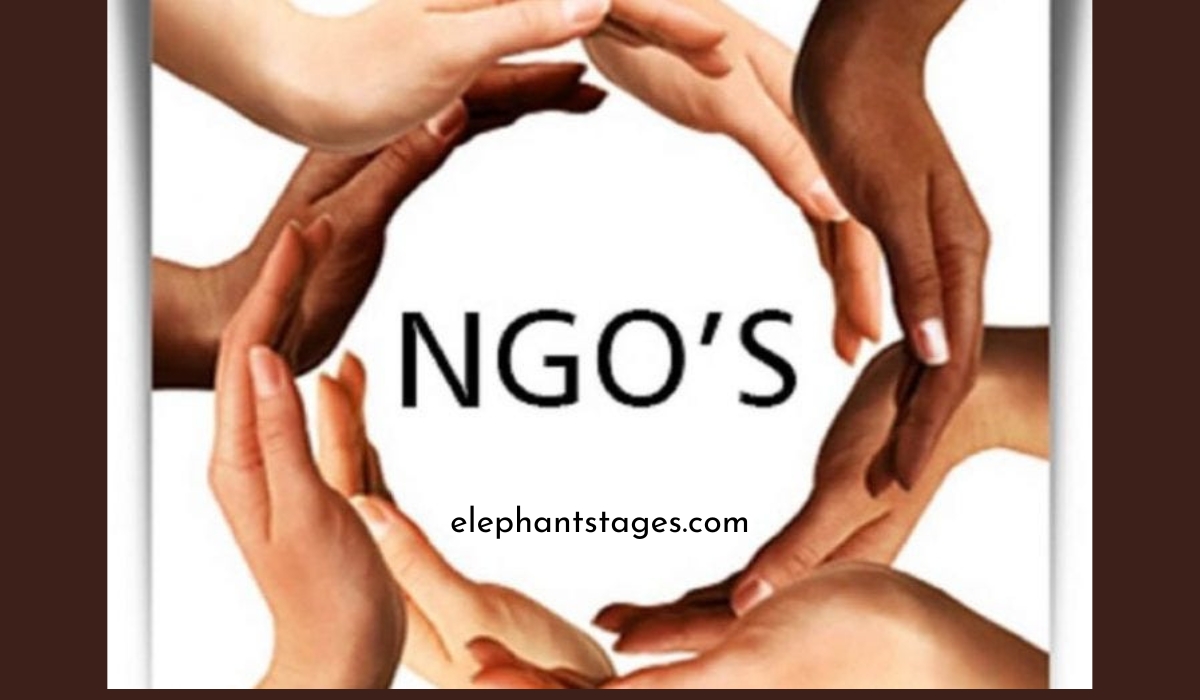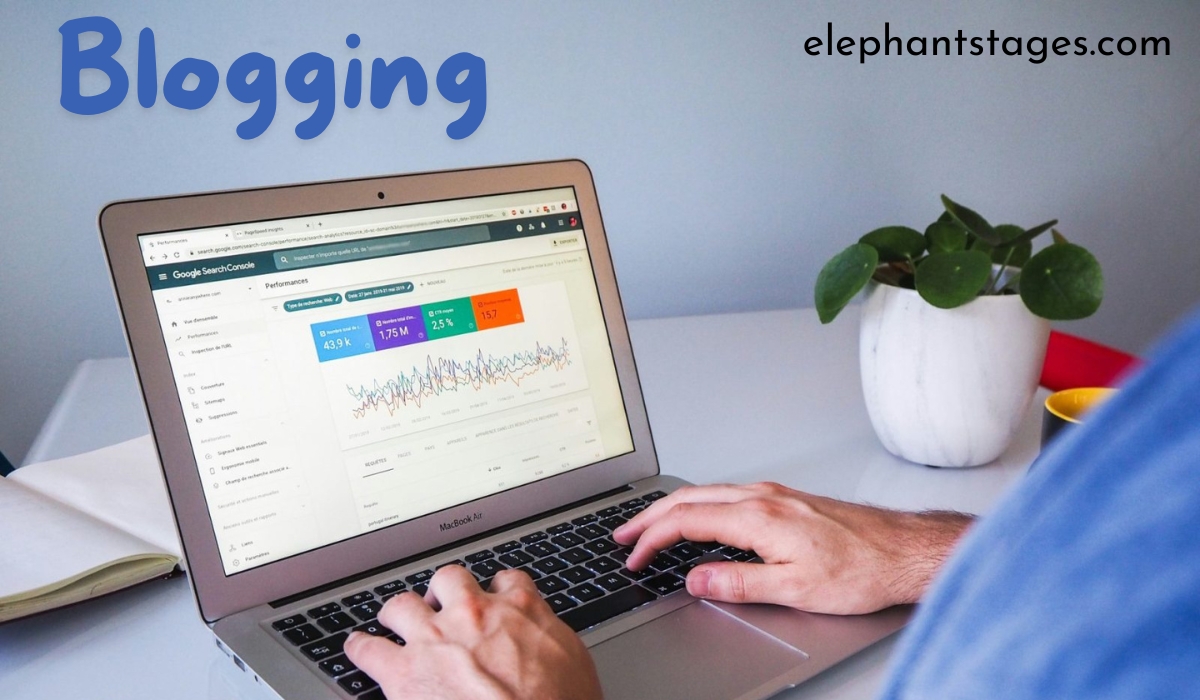Blog
A Landlord’s Guide to the Washington Eviction Process

If you’re a landlord in Washington facing an eviction, understanding the process is crucial. From serving notices to navigating court proceedings, each step requires attention to detail and legal compliance.
Costs and timelines can vary, so being prepared is essential. By familiarizing yourself with the procedures and seeking legal advice, you can protect your property rights and minimize risks.
Stay informed and proactive to handle any challenges that come your way during the eviction process.
Eviction Notice Requirements in Washington
How do you ensure that you serve eviction notices in compliance with Washington state requirements?
When dealing with eviction in Washington, it’s crucial to follow the Washington state eviction process meticulously. Understanding Washington squatters rights is also essential.
Make sure to serve the Rent Demand Notice, Lease Violation Notice, or Unconditional Notice to Quit correctly, giving the tenant the specified period to respond. Serve the notice through personal delivery, posting, or mailing, as required by law. Remember that landlords can seek actual damages and reasonable attorney fees.
Familiarize yourself with the procedures for filing an unlawful detainer complaint in Superior Court, including the necessary information and the filing fee. By adhering to Washington state eviction laws, you can navigate the process effectively.
Court Proceedings for Eviction
To proceed with court proceedings for eviction in Washington, ensure that you have served the necessary eviction notices in compliance with state requirements.
Once the tenant fails to respond appropriately within the designated timeframe, you, as the landlord, can file an unlawful detainer complaint in Superior Court. This initiates the court proceedings for eviction.
The court will issue a summons for the tenant to appear at a hearing, detailing the nature of the action and the relief sought. The summons must be served at least 5 days before the return day by a sheriff, deputy, or a person over 18 years old.
It’s essential for the tenant to file an answer within 20 days of the summons service to avoid a default judgment.
Filing a Complaint and Court Judgment
Once you have filed an unlawful detainer complaint in Superior Court, the next step in the Washington eviction process is to await the court’s issuance of a judgment. The court will review the complaint, evidence, and any responses from the tenant before making a decision.
If the tenant fails to respond within the specified time frame, the court may issue a default judgment in your favor. This judgment will outline the terms of the eviction, including repossession of the property and any monetary damages awarded.
Be prepared to present all necessary documentation and evidence to support your case during the court proceedings. Following the court’s judgment, you can proceed with obtaining a writ of restitution for the tenant’s removal from the property.
Evicting Squatters in Washington
After successfully obtaining a court judgment in the eviction process, the next step is addressing the process of evicting squatters in Washington. Squatters are individuals who unlawfully occupy a property without permission.
In Washington, squatters must meet specific criteria to claim possession rights, including hostile/adverse possession. If a squatter meets all criteria, they can file for adverse possession.
To remove a squatter in Washington, contact local law enforcement and follow the eviction process. It’s crucial to act promptly and follow legal procedures to regain possession of your property.
Remember to document all interactions with the squatter and seek legal advice if needed to ensure a smooth eviction process.
Costs and Considerations in Eviction Process
When considering the eviction process in Washington, factor in the potential costs and considerations.
The expenses involved in an eviction can vary, including the filing fee for the complaint at $45 and the tenant’s answer filing fee at $112. Additional losses like lost rent and time during the process should also be taken into account.
The duration of the eviction process in Washington can fluctuate based on case complexity and court workload. Factors impacting eviction costs may include court rules and procedures specific to Washington.
It’s advisable to hire an eviction attorney due to the process’s complexity, and understanding legal procedures and state laws can help you navigate the eviction process smoothly.
Conclusion
In conclusion, as a landlord in Washington state, it’s crucial to familiarize yourself with the eviction process to protect your property rights effectively.
By understanding the eviction notice requirements, court proceedings, and potential costs involved, you can navigate the process smoothly.
Seeking legal guidance is recommended to ensure compliance with local laws and procedures, minimizing risks of wrongful eviction.
Stay informed, proactive, and prepared to handle any challenges that may arise during the eviction process.
Blog
Top 5 ways you can contribute to an NGO

Non-Governmental Organisations (NGOs) are crucial in addressing various global social, environmental, and humanitarian issues. Their impact relies heavily on the support and contributions of individuals who share their vision for a better world. Whether through volunteering, financial donations, advocacy efforts, or raising awareness, each contribution is vital in empowering NGOs to make a tangible difference in communities and advocate for systemic change on a larger scale.
You can contribute to an NGO by volunteering your time and skills through online donations, advocating for their mission, and raising awareness about social issues. Each form of contribution plays a vital role in helping them achieve their goals and positively impact the communities they serve. Here are five effective ways to contribute to an NGO and make a meaningful difference.
Volunteer Your Time and Skills
Volunteering your time and skills is one of the most direct and impactful ways to support an NGO. These organisations operate on limited budgets and rely heavily on dedicated volunteers to carry out their mission effectively. Depending on your availability and interests, there are numerous ways to get involved. For instance, you could assist with administrative tasks such as data entry, correspondence, or organising files. If you enjoy organising events, NGOs frequently need help planning fundraisers, community outreach programs, or awareness campaigns. For those with specialised skills, opportunities may include offering legal advice, accounting services, graphic design, or IT support.
Donate Financially or in kind
Financial contributions play a critical role in the sustainability and impact of NGOs worldwide. By making a financial contribution, whether as a one-time donation or through regular online donations, you provide essential support that enables these organisations to plan and execute their initiatives effectively. Your donation could fund crucial aspects such as healthcare services, educational programs, environmental conservation efforts, or humanitarian aid projects. Moreover, many NGOs also welcome in-kind donations, including tangible goods like food, clothing, medical supplies, or educational materials.
Raise Awareness and Advocate
Advocacy is a powerful tool for creating meaningful systemic change and increasing awareness about critical social issues. As a supporter of an NGO, you can leverage your voice and platforms to educate others about their mission and the broader issues they aim to address.
Social media platforms provide a vibrant platform for disseminating campaigns, success stories, and pressing needs to a worldwide audience. By amplifying their messages, you can spark conversations, engage others in dialogue, and inspire action towards positive change. Beyond digital platforms, organising awareness events in your local community can have a profound impact. These gatherings include a range of programmes, including film screenings, panel discussions, workshops, and seminars that tackle particular social topics.
Participate in Fundraising Campaigns
Many NGOs rely on fundraising campaigns to finance their projects and expand their outreach. By planning fundraising events, crowdfunding campaigns, or peer-to-peer fundraising drives, you can take an active role in these activities. These efforts raise essential funds and engage a broader audience in supporting the NGO’s mission. Whether it’s a charity run, an online auction, or a themed fundraiser, your participation can significantly contribute to the organisation’s financial sustainability and ability to serve communities effectively.
Offer Pro Bono Services
If you are a professional with specialised knowledge, you might want to explore providing pro bono services to an NGO. Many organisations require legal advice, marketing strategies, graphic design, IT support, or other professional services that you could provide. By offering your skills pro bono, you help organisations reduce operational costs and strengthen their capacity to deliver impactful programs.
Contributing to an NGO goes beyond making online donations; It involves actively embracing their mission and backing their initiatives aimed at fostering positive change. With the help of NGOs, you may make a significant difference and encourage others to join you in building a better world by figuring out a method to contribute that fits your interests and skills. Contributing to these organisations allows individuals to play a direct role in addressing societal challenges and fostering sustainable development, empowering communities to thrive.
Blog
Festive Custom Pins to Celebrate Christmas in Style

Custom pins offer a charming and versatile way to celebrate Christmas. With a myriad of designs ranging from classic symbols like Santa Claus and Christmas trees to whimsical characters such as elves and gingerbread men, these accessories add a festive touch to any attire. Whether for parties, gifts, or simply spreading holiday cheer, bespoke pins are an ideal choice to elevate your Christmas festivities.
Santa Claus Pins
Santa Claus pins are a quintessential symbol of Christmas. These custom pins feature Santa in his iconic red suit, white beard, and jolly smile. Wearing a Santa Claus custom pin instantly brings a sense of joy and nostalgia, making them a versatile accessory for spreading holiday cheer.
Christmas tree Pins
Christmas tree custom pins capture the essence of the holiday’s most recognizable symbol. These pins feature beautifully decorated evergreen trees with ornaments, tinsel, and a shining star. A Christmas tree custom pin adds a festive touch to any outfit, perfect for holiday parties or gatherings.
Snowflake Pins
Snowflake pins are a delicate and elegant way to celebrate the winter season. Each snowflake custom pin is unique, with intricate designs highlighting their natural beauty. These pins add sophistication to your holiday attire and make excellent gifts for friends and family.
Reindeer Pins
Reindeer custom pins are a playful and charming addition to any holiday pin collection. These pins typically depict reindeer with festive decorations like bells, wreaths, or Santa’s sleigh. Wearing a reindeer custom pin adds a whimsical touch to your holiday ensemble, perfect for spreading cheer.
Gingerbread Man Pins
Gingerbread man pins bring a sweet and nostalgic element to your holiday attire. These pins feature the classic gingerbread cookie shape, complete with icing decorations and candy buttons. Gingerbread man pins are perfect for adding a fun and festive touch to any outfit.
Christmas Wreath Pins
Christmas wreath pins celebrate the season’s decorative traditions. These custom pins feature circular wreaths adorned with holly, berries, and ribbons. Wearing a Christmas wreath custom pin brings a touch of elegance and festivity to any outfit, ideal for holiday events and gatherings.
Holiday Stocking Pins
Holiday stocking pins capture the excitement of Christmas morning. These pins depict stockings filled with goodies like candy canes, toys, and gifts. Wearing a holiday stocking custom pin reminds you of the joy of finding your stocking filled with surprises, adding a playful touch to your wardrobe.
Nutcracker Pins
Nutcracker pins are a sophisticated way to celebrate the holiday season. These pins feature the iconic nutcracker soldier, a symbol of strength and protection. Nutcracker custom pins add elegance to your attire, making them perfect for formal holiday events or “The Nutcracker” performances.
Candy Cane Pins
Candy cane pins embody the spirit of Christmas with their sweet and festive design. These pins feature red and white striped candy canes, sometimes adorned with bows or holly. Wearing a candy cane custom pin adds a pop of color and whimsy to your holiday outfit.
Elf Custom Pins
Elf custom pins are a playful and whimsical addition to your holiday collection. These pins feature mischievous and hardworking elves that help Santa prepare for Christmas. Wearing an elf custom pin adds fun and magic to your holiday ensemble, perfect for spreading smiles and cheer.
Holiday Light Pins
Holiday light pins are bright and cheerful, celebrating the Christmas season. These pins depict colorful strands of holiday lights or individual bulbs, often adorned with glow in the dark stickers for an extra festive touch. Wearing a holiday light custom pin adds a festive glow to your outfit, reminding everyone of the beautiful lights decorating homes and streets.

Christmas Bell Pins
Christmas bell pins are a classic and elegant accessory for the holiday season. These custom pins feature bells adorned with ribbons, holly, or other festive decorations. Wearing a Christmas bell custom pin evokes the joyful sounds of holiday carols, adding sophistication to your holiday attire.
Christmas Present Pins
Christmas present pins celebrate the joy of giving and receiving gifts. These pins depict beautifully wrapped presents with bows and ribbons. Wearing a Christmas present custom pin adds a festive touch to your outfit, reminding you of the excitement of opening gifts on Christmas morning.
Angel Custom Pins
Angel custom pins are a serene and beautiful way to celebrate the spiritual aspect of Christmas. These pins feature angels with flowing robes, wings, and sometimes musical instruments. Wearing an angel custom pin adds grace and elegance to your holiday attire, perfect for religious celebrations or holiday concerts.
YOU MAY ALSO LIKE: Custom Stickers for Social Causes: Raising Awareness and Inspiring Action
Conclusion
Custom pins are a fantastic way to celebrate Christmas and express your holiday spirit. With a wide variety of designs, from the jolly Santa Claus to the elegant angel, there is a custom pin for every taste and occasion. These pins can add a festive touch to your wardrobe, making you feel more connected to the magic of the season. Whether you’re attending a holiday party, exchanging gifts, or simply enjoying the company of loved ones, custom pins are a wonderful way to celebrate Christmas in style.
Blog
Ultimate Blogging Guide for 2024

Blogging in 2024 has evolved significantly from the early days of personal web diaries. Now, it’s a sophisticated tool used for personal branding, business marketing, and community building. Whether you’re a seasoned blogger or just starting, this guide will help you navigate the complexities of blogging today, ensuring you stay ahead of the curve.
1. Understanding the Modern Blogging Landscape
1.1 The Role of Blogging Today
Blogging is no longer just about sharing thoughts; it’s a multi-faceted tool for:
- Building Authority: Establishing yourself or your brand as a leader in your industry.
- SEO and Traffic Generation: Improving your website’s visibility in search engines.
- Engagement and Community Building: Creating a space for readers to engage with your content and each other.
- Monetization: Generating revenue through various methods, including ads, sponsored posts, and affiliate marketing.
1.2 Trends Shaping Blogging in 2024
- AI Integration: AI tools like ChatGPT are used for content creation, editing, and SEO optimization.
- Video Content: Vlogs and video embeds are increasingly popular for engaging audiences.
- Microblogging: Short-form content, often posted on platforms like Twitter or within long-form blogs as quick insights.
- Niche Focus: Specializing in specific niches to cater to dedicated audiences.
- Interactive Content: Polls, quizzes, and interactive infographics to boost engagement.
2. Starting Your Blog
2.1 Choosing a Niche
Selecting the right niche is crucial for attracting a targeted audience. Consider:
- Passion and Knowledge: Write about what you know and love.
- Market Demand: Use tools like Google Trends to research popular topics.
- Monetization Potential: Evaluate if your niche has opportunities for revenue generation.
2.2 Setting Up Your Blog
- Domain Name and Hosting: Choose a memorable domain name and reliable hosting service. Consider platforms like Bluehost or SiteGround.
- Blogging Platform: WordPress is the most popular due to its flexibility, but others like Wix or Squarespace offer user-friendly options.
- Design and Theme: Use responsive, aesthetically pleasing themes. Ensure they are optimized for mobile use.
3. Creating Compelling Content
3.1 Content Planning and Strategy
- Editorial Calendar: Plan your posts to maintain consistency.
- Content Mix: Balance long-form articles, videos, infographics, and microblogs.
- SEO Strategy: Perform keyword research using tools like Ahrefs or SEMrush to optimize for search engines.
3.2 Writing Engaging Posts
- Headlines: Craft compelling headlines to grab attention.
- Introduction: Hook the reader with a strong opening.
- Body: Use subheadings, bullet points, and visuals to break up text.
- Conclusion: Summarize key points and include a call to action.
3.3 Leveraging AI Tools
Use AI tools for:
- Content Generation: Get ideas or even generate drafts.
- Editing: Tools like Grammarly or Hemingway for grammar and readability.
- SEO Optimization: AI can help suggest keywords and meta descriptions.
3.4 Incorporating Visuals
- Images and Infographics: Use tools like Canva to create custom visuals.
- Videos: Embed relevant YouTube videos or create your own.
- Interactive Elements: Incorporate polls, quizzes, and interactive maps.
4. SEO and Traffic Generation
4.1 On-Page SEO
- Keywords: Use primary and secondary keywords naturally throughout your content.
- Meta Descriptions: Write compelling meta descriptions to improve click-through rates.
- Internal Linking: Link to your own posts to keep readers on your site longer.
4.2 Off-Page SEO
- Backlinks: Build backlinks by guest posting and collaborating with other bloggers.
- Social Media: Share your posts on social media platforms to drive traffic.
- Email Marketing: Use newsletters to keep your audience engaged and drive them to your blog.
4.3 Analytics and Performance Tracking
- Google Analytics: Track traffic, user behavior, and conversion rates.
- SEO Tools: Use tools like Moz or Ahrefs to monitor your SEO performance.
5. Monetizing Your Blog
5.1 Advertising
- Display Ads: Use platforms like Google AdSense to display ads.
- Sponsored Posts: Collaborate with brands for paid content.
5.2 Affiliate Marketing
- Product Reviews: Write reviews for products and include affiliate links.
- Resource Pages: Create pages with affiliate links to recommended products.
5.3 Selling Products or Services
- Ebooks and Courses: Sell digital products directly from your blog.
- Consulting Services: Offer your expertise as a service.
6. Building and Engaging Your Audience
6.1 Community Building
- Comments Section: Engage with readers in the comments.
- Social Media Groups: Create groups or communities on platforms like Facebook or LinkedIn.
6.2 Networking with Other Bloggers
- Guest Blogging: Write for other blogs to reach a wider audience.
- Collaborations: Partner with other bloggers for joint ventures.
6.3 Personalization and Engagement
- Email Newsletters: Segment your email list to send personalized content.
- Interactive Content: Use polls and quizzes to interact with your audience.
7. Staying Updated
7.1 Continuous Learning
- Online Courses: Take courses on platforms like Coursera or Udemy.
- Webinars and Conferences: Attend events to stay updated on trends.
7.2 Adapting to Changes
- Algorithm Updates: Stay informed about changes in search engine algorithms.
- New Tools and Platforms: Experiment with new blogging tools and social media platforms.
8. Case Studies and Examples
8.1 Successful Blogs
- Niche Blogs: Analyze blogs that have succeeded in specific niches.
- Personal Brands: Look at how individuals have built successful blogs around their personal brand.
8.2 Lessons from Failure
- Common Mistakes: Learn from common blogging mistakes such as inconsistent posting or neglecting SEO.
- Recovery Strategies: Understand how to bounce back from setbacks like traffic drops or failed monetization attempts.
Conclusion
Blogging in 2024 is dynamic, with endless opportunities for those willing to innovate and adapt. Whether you’re blogging for fun, business, or a combination of both, the key to success lies in understanding the trends, creating compelling content, engaging your audience, and continuously learning and adapting. Use this guide as a roadmap to navigate your blogging journey and achieve your goals in the ever-evolving digital landscape.
-

 Tech2 months ago
Tech2 months agoAiyifan: Unveiling the Genie of Technological Revolution
-

 Fashion2 months ago
Fashion2 months agoAttractive Beach Dresses: Elevate Your Look with These Ideas
-

 Tech4 months ago
Tech4 months agoThe Ultimate Guide to the Geekzilla Podcast: Diving into the Heart of Geekdom
-

 Home Improvement2 months ago
Home Improvement2 months ago5 Maintenance Tips to Last Your Garage Door’s Life
-

 News4 months ago
News4 months agoTruth Unveiled: Chrisley Knows Best Daughter Dies 2022 Rumor Disproved
-

 Entertainment4 months ago
Entertainment4 months agoThe Grand Duke is Mine Spoilers – A Journey into a Timeless Romance
-

 Entertainment3 months ago
Entertainment3 months agoI Became a Crazy Swordsmanship Instructor in the Game
-

 Pets1 month ago
Pets1 month agoPawsitively Perfect: The Types of Dog Harness Bundle for Your Furry Friend
















